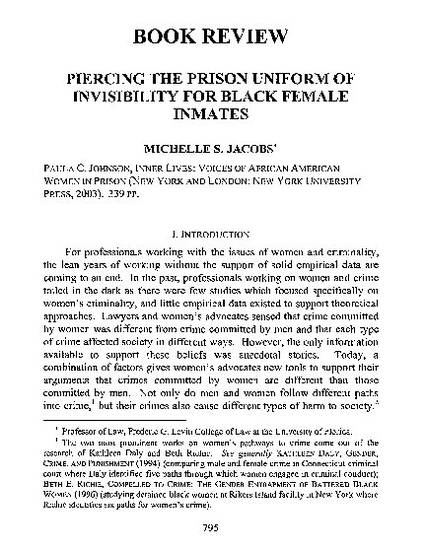
In Inner Lives: Voices of African American Women In Prison, Professor Paula Johnson has written about the most invisible of incarcerated women — incarcerated African American women. The number of women incarcerated in the United States increased by seventy-five percent between 1986 and 1991. Of these women, a disproportionate number are black women. The percentages vary by region and by the nature of institution (county jail, state prison or federal facility), but the bottom line remains the same. In every instance, black women are incarcerated at rates disproportionate to their percentage in the general population. In Inner Lives, Professor Johnson offers African American incarcerated women an opportunity to push back the veil of invisibility and to claim for themselves the right to control their stories and their own images. The women talk about the strengths they had to have to survive sexual abuse, physical abuse, lack of resources and drug addiction. They speak of the strength required to survive not only incarceration, but the awareness that they harmed their victims, the victims' families, their own family members, and themselves. The stories test the limits of our understanding of individual responsibility on the one hand, and wholesale societal failure to provide a safety net for some of our most vulnerable citizens on the other.
